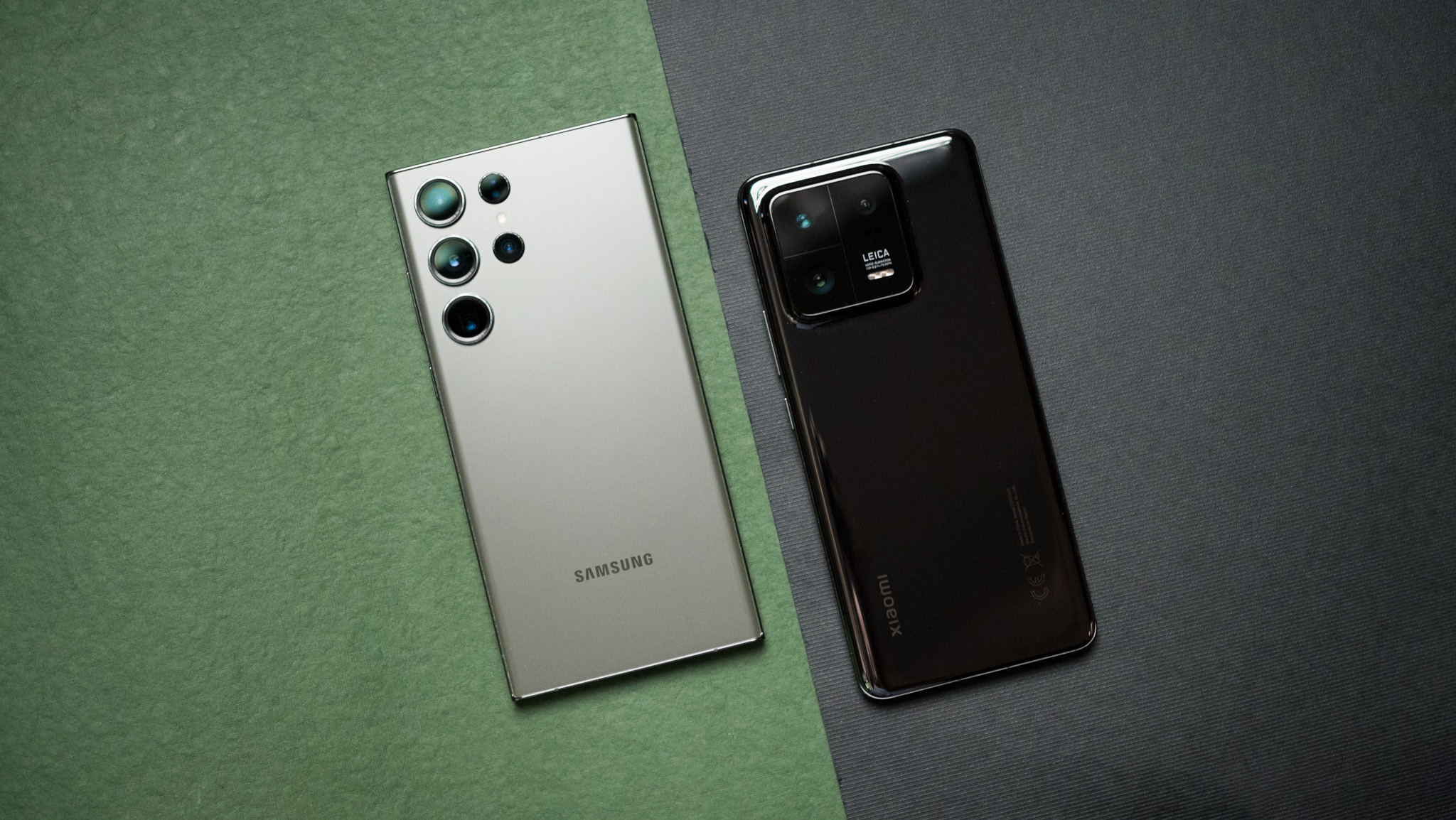
The Galaxy S23 Ultra is still the best overall phone if you want a device with the most number of features. The phone has a sublime 120Hz AMOLED screen that is among the best on Android, the hardware is better than just about any other phone I've used this year, and I like the minimalist design. Sure, it doesn't look too different to the S22 Ultra, but the small tweaks that Samsung made to the design make a big difference in daily use, and I don't find it to be as cumbersome to hold and use as its predecessor. Then there's the cameras; with a new 200MP lens at the back and versatile auxiliary cameras, the S23 Ultra is a powerhouse in this area.
For
- One of the best AMOLED screens available today
- Fastest internal hardware of any Android phone
- Gorgeous design with usability-focused tweaks
- Cameras take stunning photos and videos
- All the extras you need
- Four guaranteed Android OS updates
Against
- Large and heavy
- Slower charging than Xiaomi 13 Pro
- No charger in the box
I'm not exaggerating when I say that the 13 Pro is Xiaomi's best effort by a long margin. The ceramic design is reminiscent of the Mi 11 Ultra, and the phone feels fabulous to hold and use — I definitely prefer the in-hand feel to the S23 Ultra even though it weighs nearly the same. Xiaomi also did a brilliant job with the cameras this year, and the trio of 50MP cameras at the back along with Leica collaboration allows the 13 Pro to take amazing photos and videos in any situation. MIUI 14 feels a little more fluid, but you don't get quite as many features as Samsung, and the 13 Pro will get one fewer Android OS update. The most frustrating thing about the 13 Pro is that it isn't sold in North America, but if you're in a country where it is officially available, it is a viable alternative to what Samsung is offering this year.
For
- Outstanding cameras
- Striking design with excellent in-hand feel
- Vibrant AMOLED screen with plenty of customizability
- Standout hardware with IP68 water resistance
- Fast 120W wired and 50W wireless charging
Against
- Won't get as many software updates as S23 Ultra
- Not sold in North America
- Much more affordable in India/China than other global markets
What are your options if you want to buy the best Android phone? Samsung is always a good bet, and the Galaxy S23 Ultra has a gorgeous design and features one of the strongest hardware packages along with versatile cameras that take phenomenal photos. Xiaomi also has a strong showing this year in the Xiaomi 13 Pro, offering three 50MP cameras and a new design that's more in line with Ultra variants of years past. With the Xiaomi 13 Pro now available in India, the U.K., and select global markets, let's find out if it has what it takes to go up against the S23 Ultra, or if you should just buy Samsung's flagship.
Samsung Galaxy S23 Ultra vs. Xiaomi 13 Pro: Design
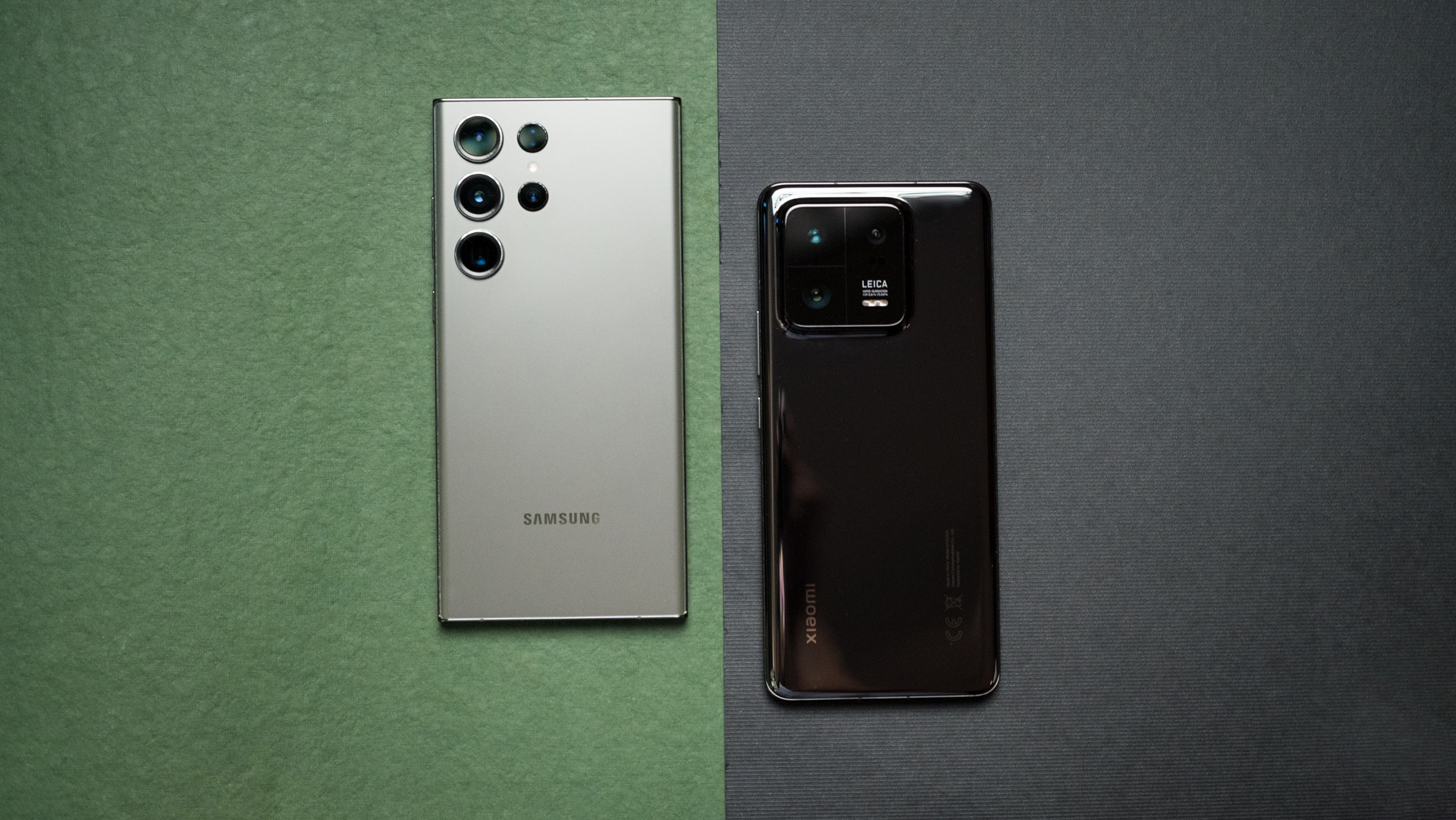
I like Samsung's design aesthetic with the Galaxy S23 Ultra; not much has changed from last year, but there are subtle tweaks that make holding and using the phone a little more comfortable. That's down to the reduced curvature of the screen and the back, and the flatter design means there's more along the mid-frame to hold on to. Samsung also did a great job with the camera housing, and the minimalist housing with the rings around the three camera modules looks elegant.
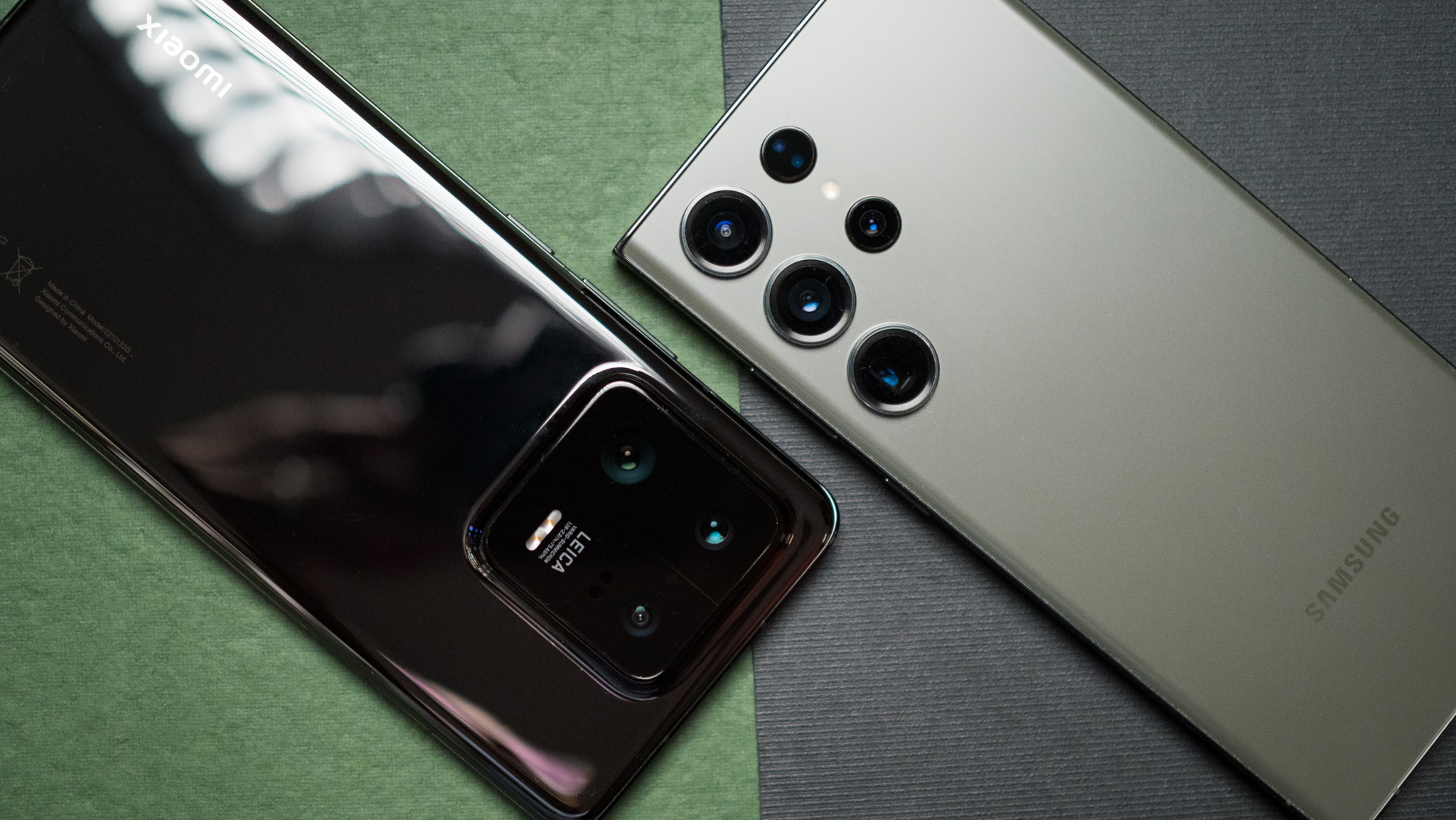
As for Xiaomi, I never quite know what the brand is going to do next. I used all of its flagships over the last nine years, and there has never been design consistency between generations — Xiaomi is perennially altering the design on a yearly basis, and that's no different on the Xiaomi 13 Pro. The phone features a ceramic back — similar to the Mi 11 Ultra — and has a squarish camera island at the back that dominates attention.
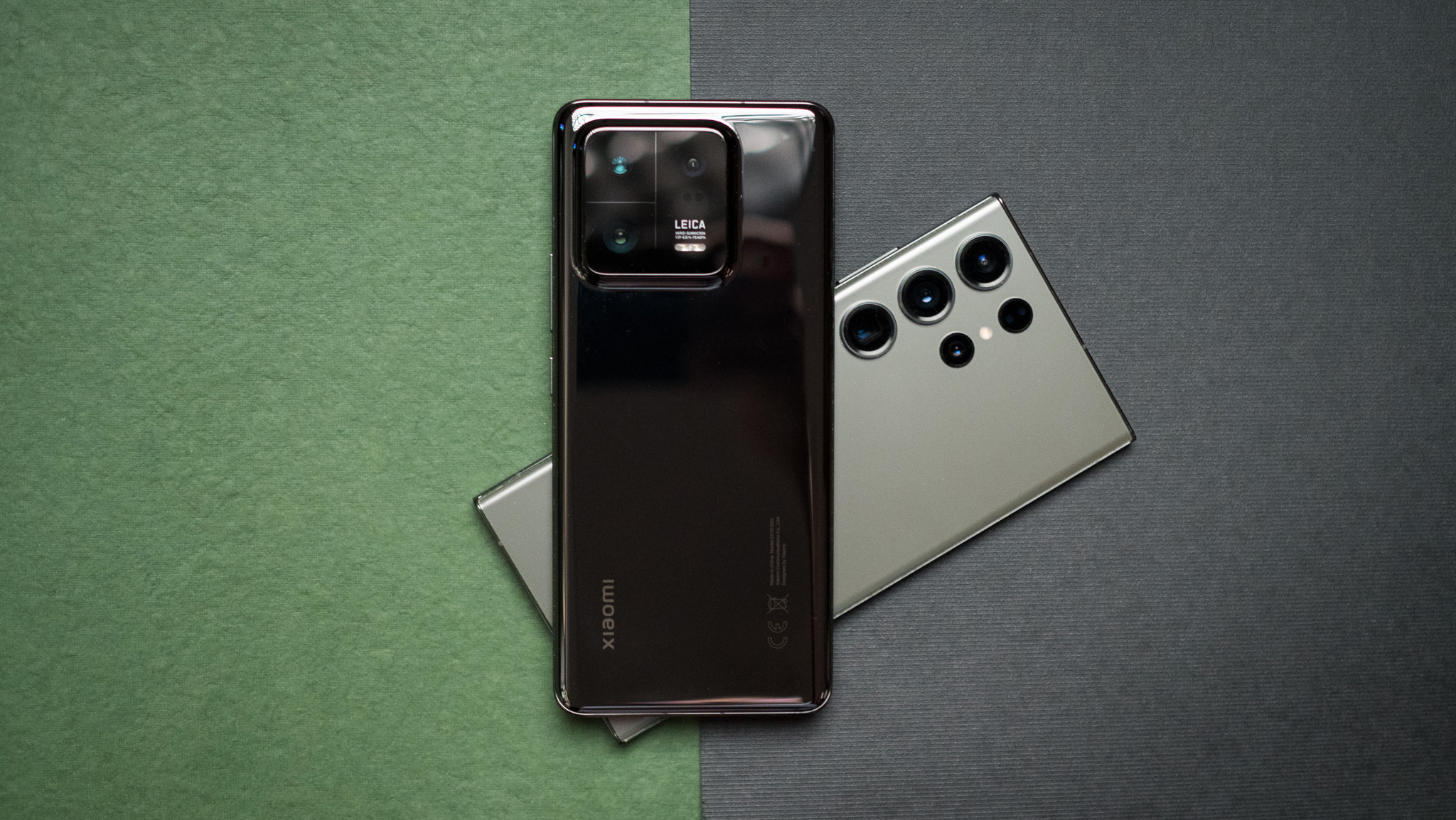
The way the island merges with the design is reminiscent of the Find X5 Pro, but the effect isn't as seamless, and the large housing with square lines doesn't quite line up with the smooth flowing curves that you'll find everywhere else on the phone. Of course, the larger island means you don't get any wobble when using the 13 Pro on a flat surface — this isn't the case on Samsung's phone.
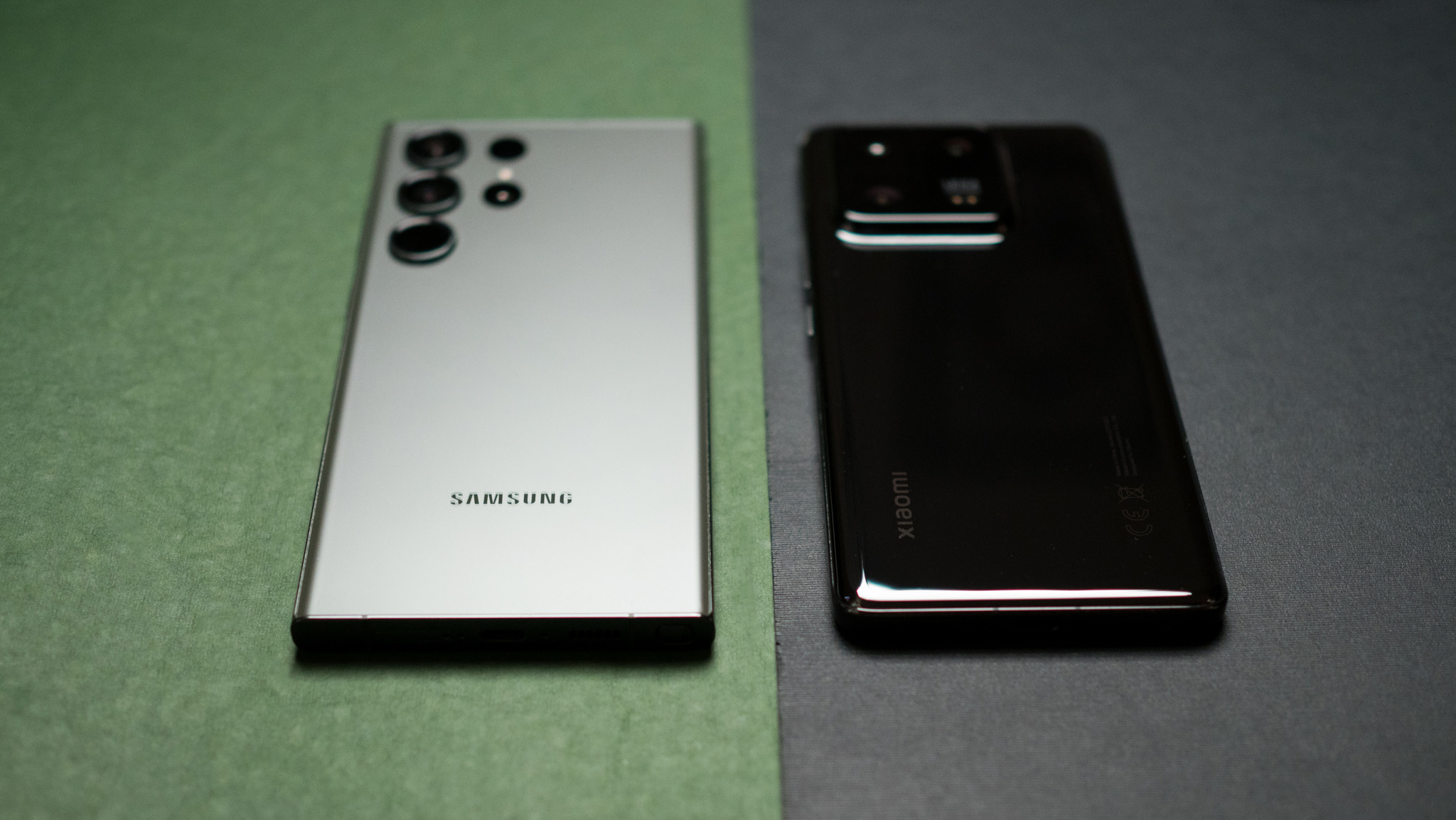
Now, as much as I like the design of the S23 Ultra, this thing is an absolute unit, and is large and somewhat unwieldy. By contrast, the Xiaomi 13 Pro is much more manageable, and at 229g, it is 5g lighter. On that note, Xiaomi went with aggressive curves at the front and back, so if you're not a fan of phones with a dual-curved screen, you won't like the 13 Pro. There is still enough room on the mid-frame to hold the device, but it isn't much; of course, a case solves this problem.
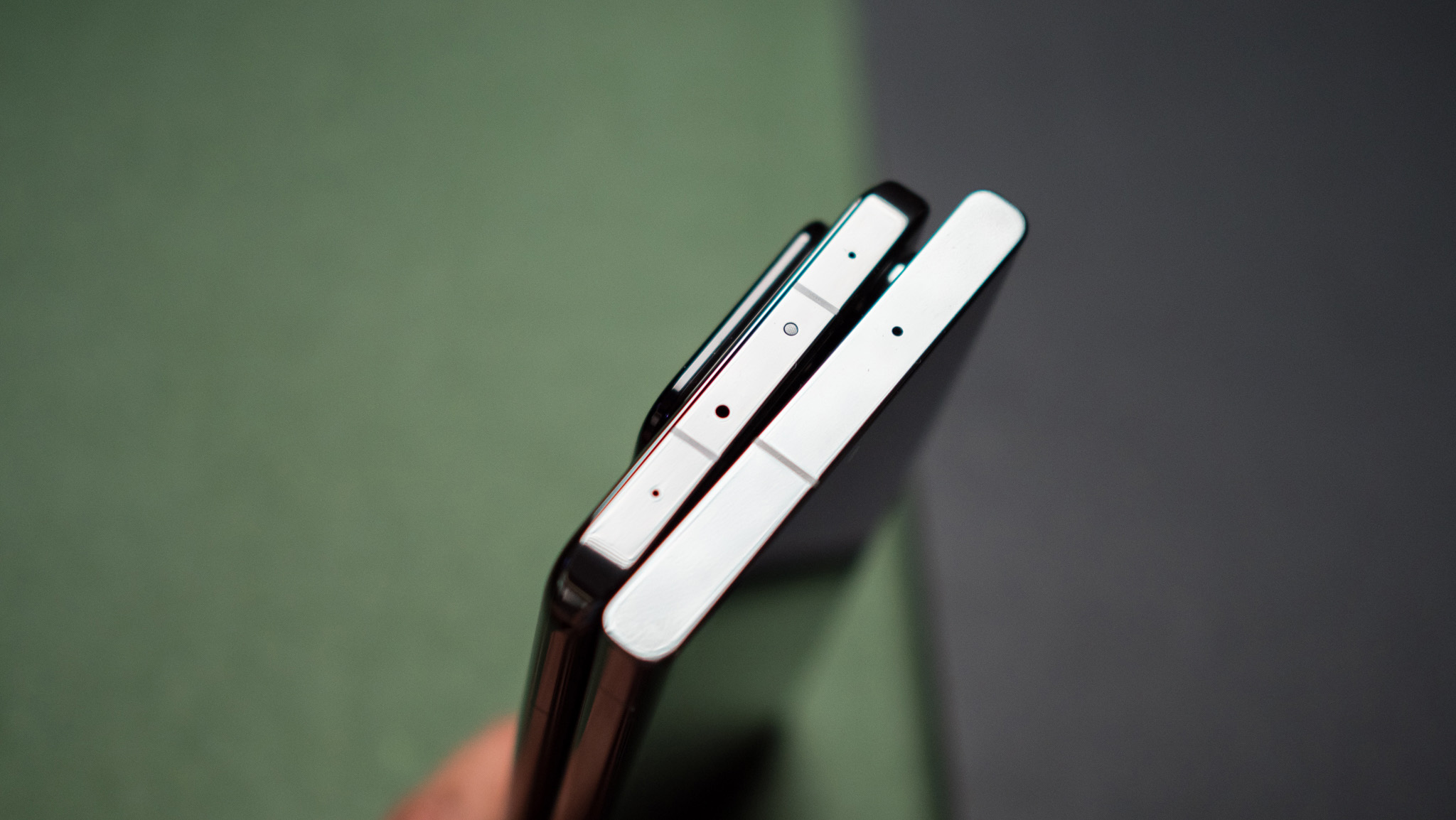
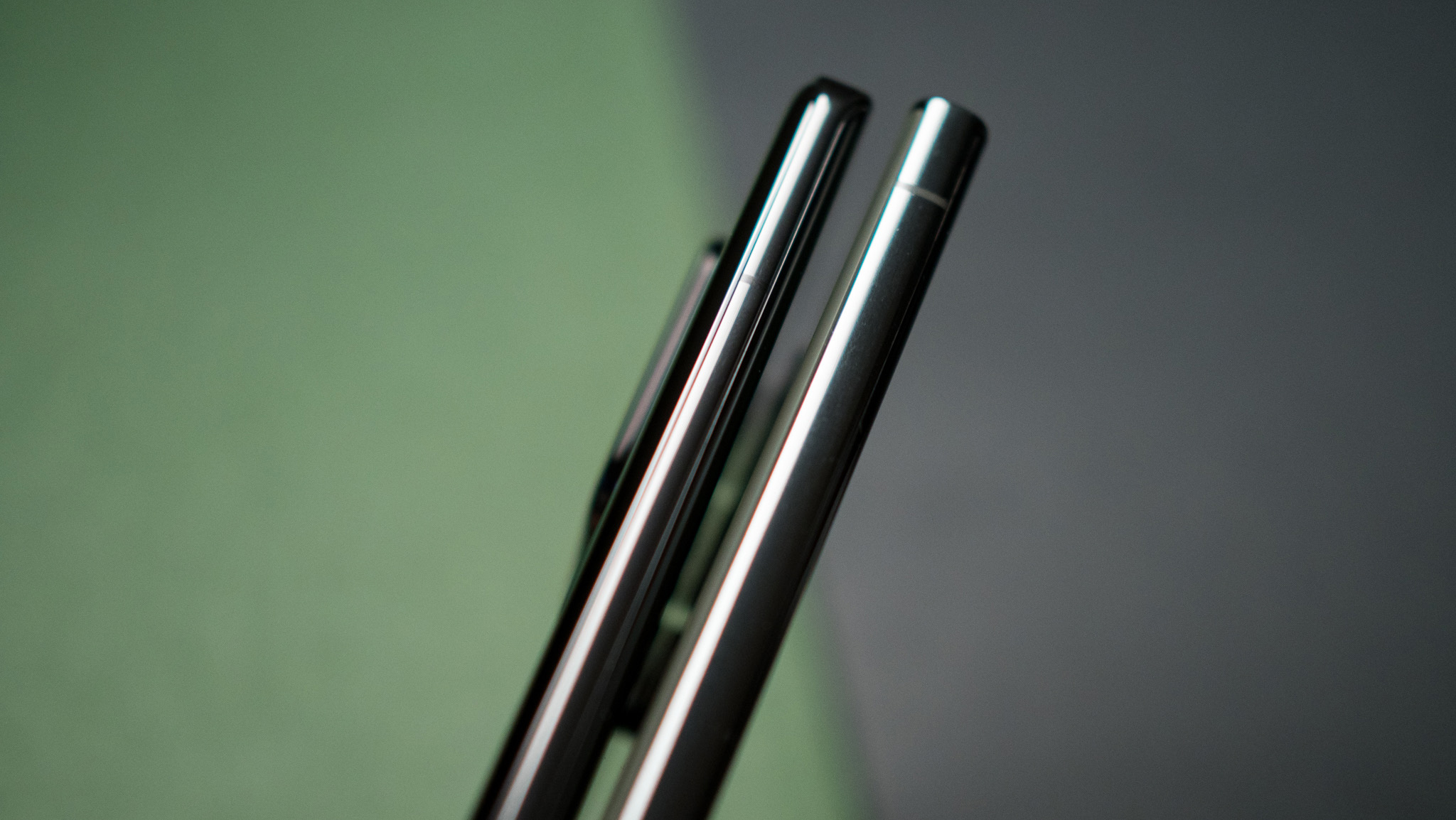
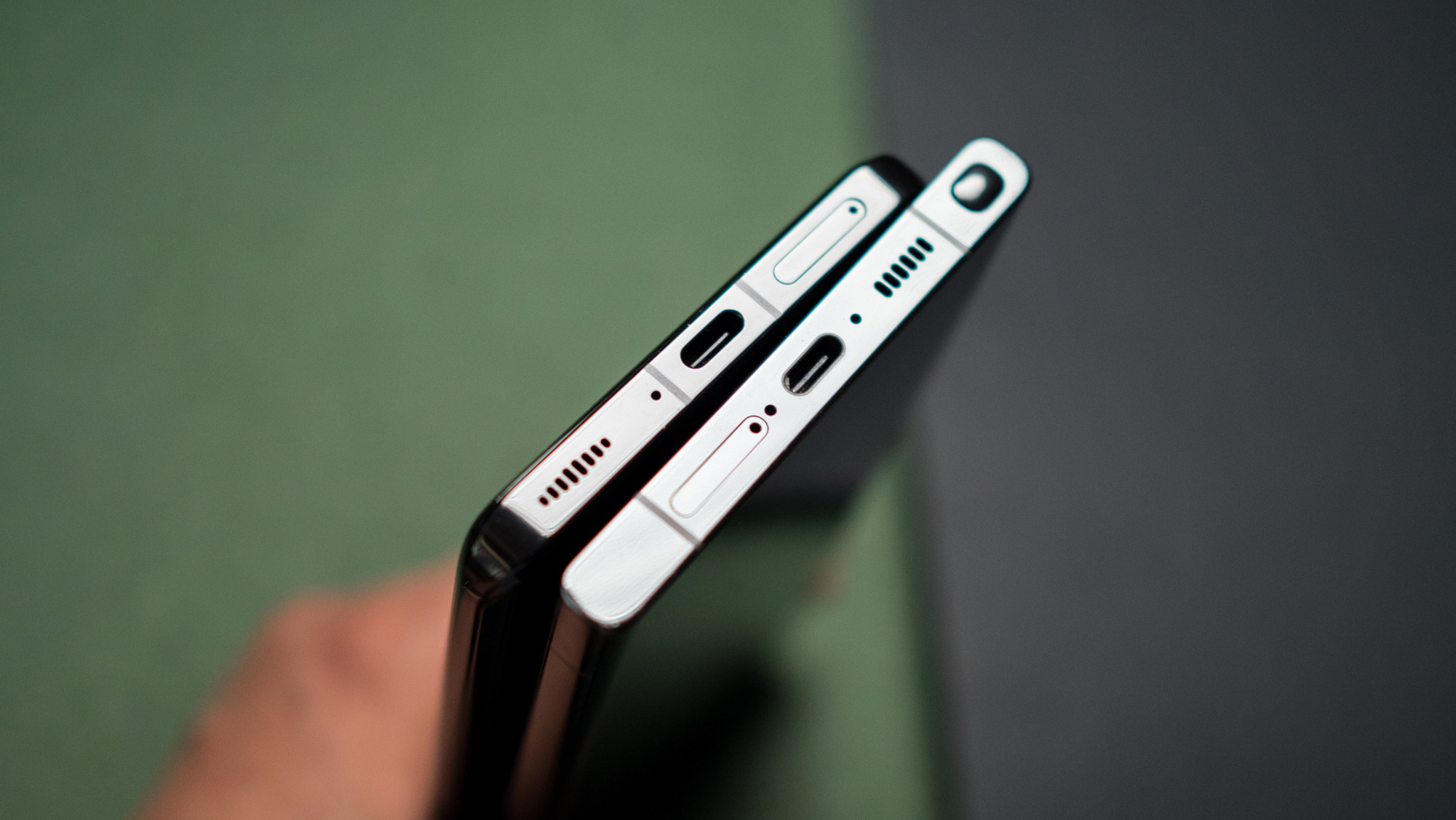
The back of the S23 Ultra has a frosted glass finish that feels great in-hand, and while I also like the ceramic design of the 13 Pro, it is a smudge magnet, and I found myself having to constantly clean it to ensure it looks pristine. Elsewhere, you get dual-SIM connectivity and eSIM as standard on both devices, and the 13 Pro has an IR blaster. Both devices also offer IP68 ingress protection as standard, and with Xiaomi ignoring this feature in the past, it's great to see the brand make amends with the 13 Pro.
Samsung Galaxy S23 Ultra vs. Xiaomi 13 Pro: Screen
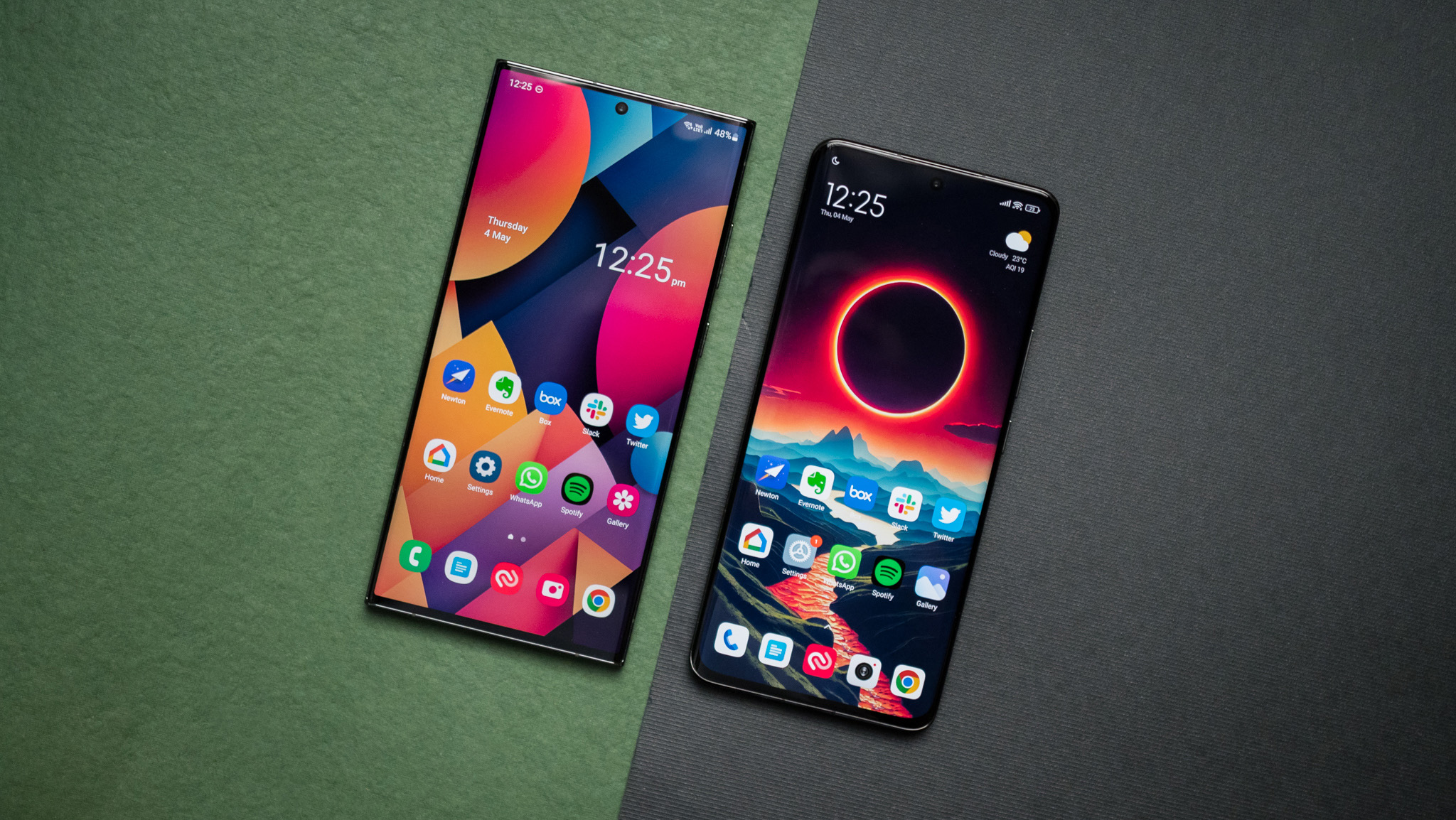
Both Samsung and Xiaomi are known for offering vibrant AMOLED panels on their phones, and the S23 Ultra and 13 Pro have two of the best screens you'll find today. The S23 Ultra has a larger 6.8-inch panel, but the 13 Pro isn't far behind with a 6.73-inch screen.
Using both devices side-by-side, I'll have to give a slender edge to the Galaxy S23 Ultra; its screen gets marginally brighter outdoors. That said, the differences between the two are minute, and regardless of whatever device you get, you're guaranteed to like the panel on offer here.
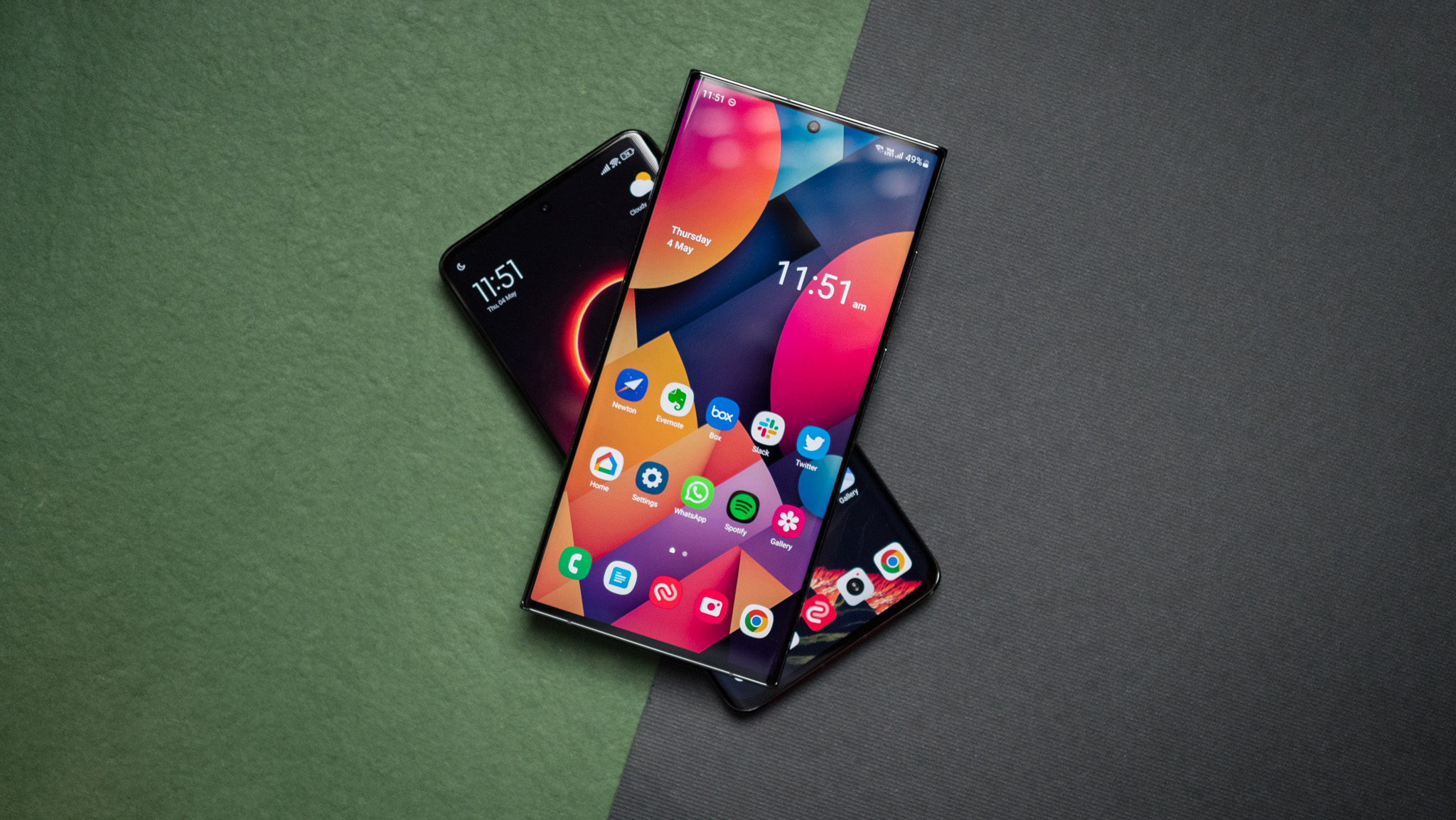
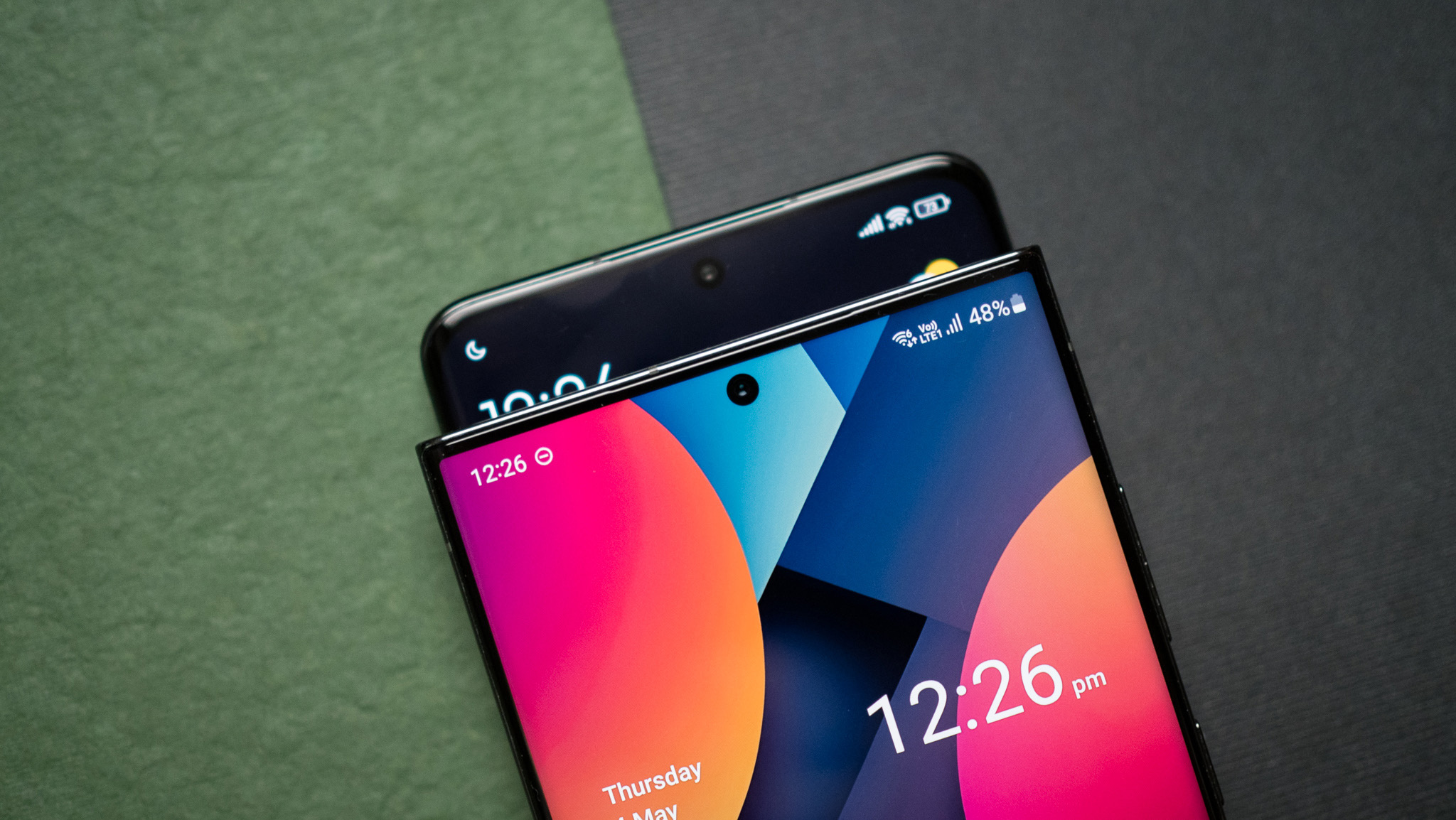
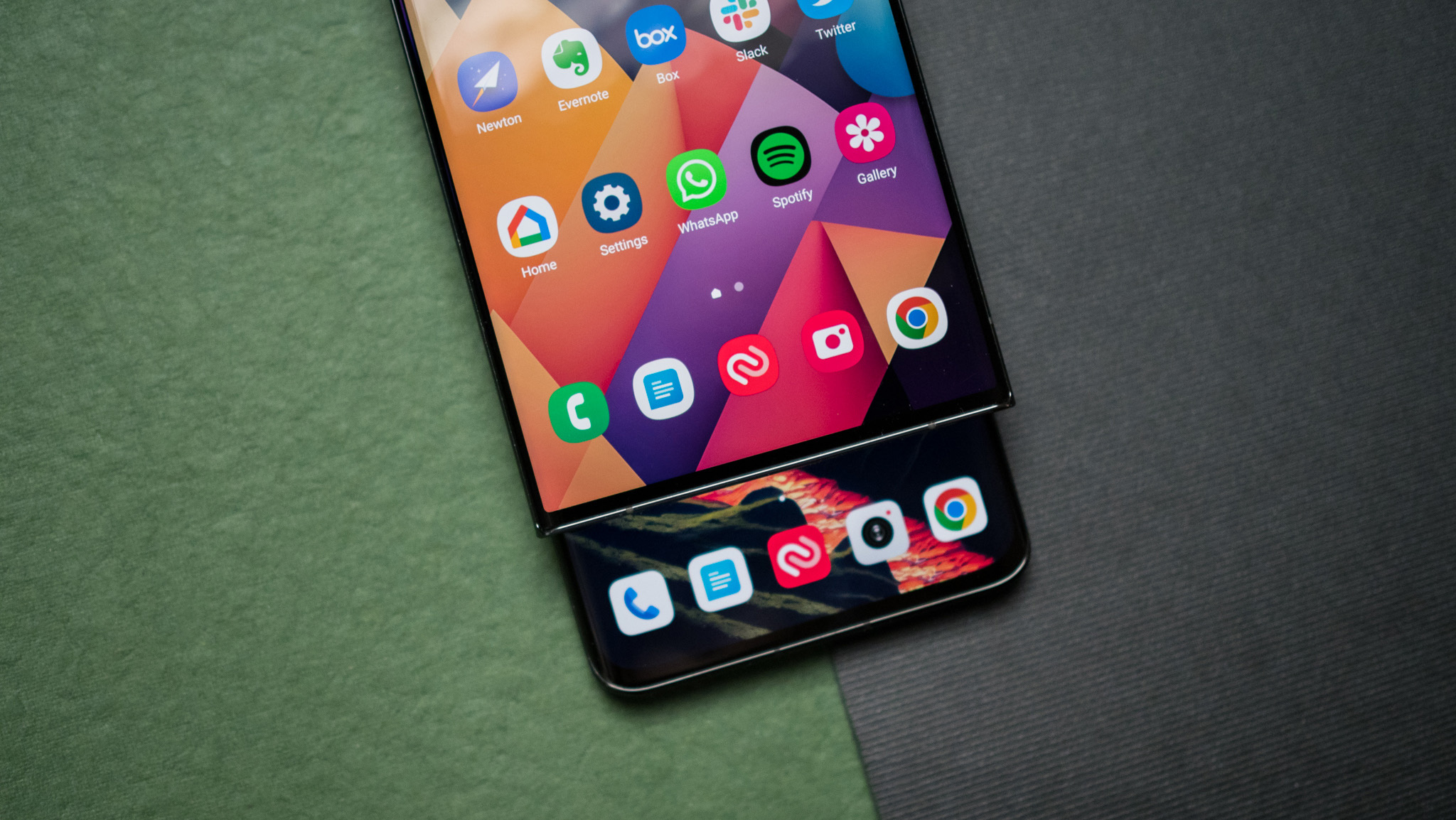
You get an exhaustive suite of customization options on both phones, including always-on mode, tweaking the color balance, and adjusting the screen refresh. Xiaomi continues to be obstinate and limits the screen refresh to 60Hz out of the box, and it is the only Android brand to do so — every other brand that has a 120Hz panel has that setting as default out of the box. But on the 13 Pro, you'll need to go into the settings to switch to the 120Hz mode.
Both devices also have stereo sound, and while Xiaomi doesn't have identical drivers like previous years, the 13 Pro still manages to produce stellar sound, and it gets loud and detailed with no distortion at higher volumes. In a similar vein, the S23 Ultra's stereo configuration is more than adequate for streaming videos and playing games, and while it doesn't get quite as loud, it is detailed.
Samsung Galaxy S23 Ultra vs. Xiaomi 13 Pro: Hardware
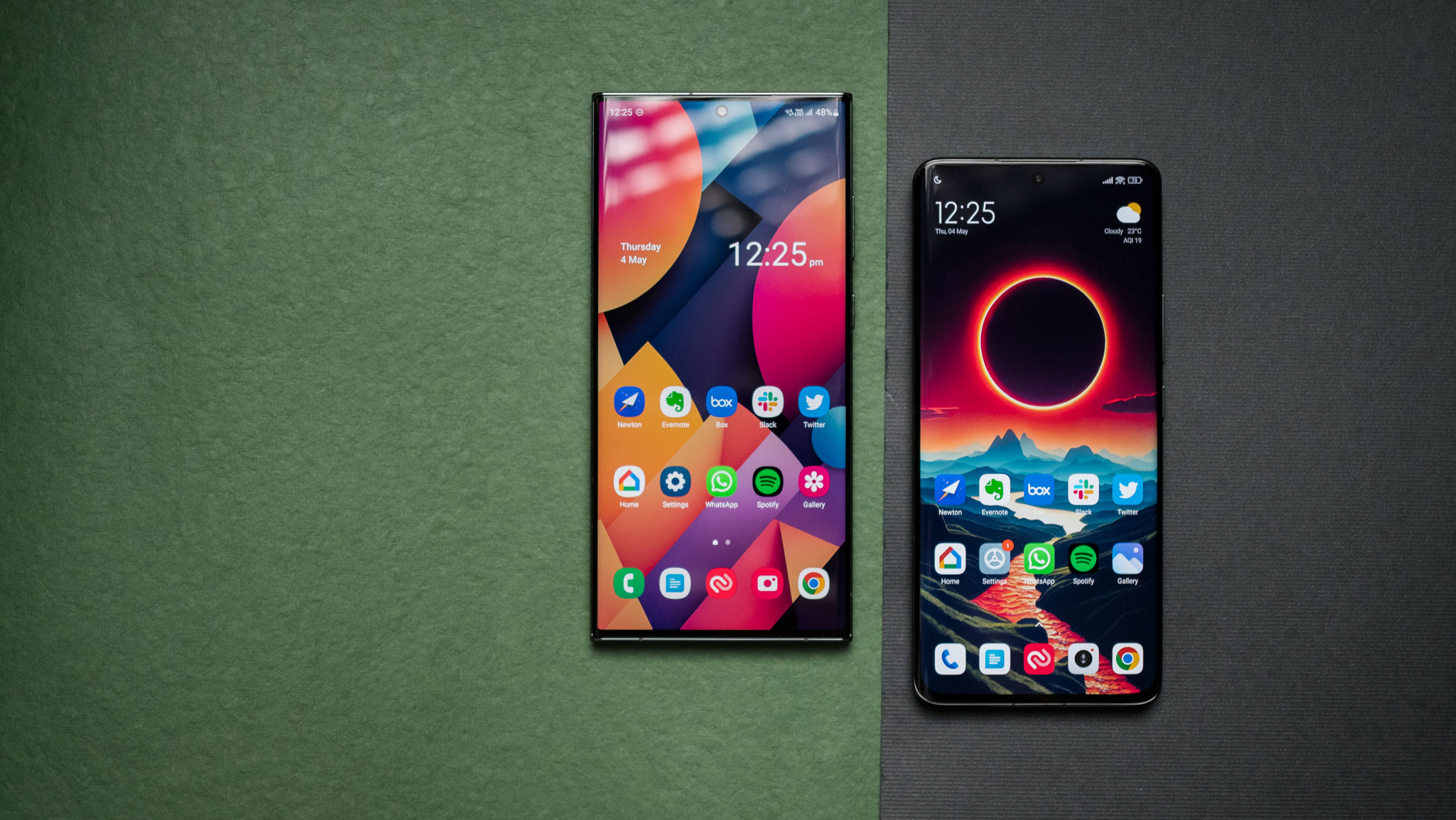
This has been a good year for Android hardware, and a lot of that is down to Qualcomm's efforts with the Snapdragon 8 Gen 2. The platform has tangible gains over last year — both in terms of sustained performance and thermal throttling — and is a genuine powerhouse. As a result, the S23 Ultra and Xiaomi 13 Pro are two of the fastest phones you'll find today.
Once again, the S23 Ultra gets a slight edge as Samsung is using a customized version of the Snapdragon 8 Gen 2 for its devices that sees a slight overclock for the Cortex X3 core, bringing it to 3.36GHz — the standard 8 Gen 2 on the Xiaomi 13 Pro and other Android flagships goes up to 3.2GHz. Of course, this doesn't mean the S23 Ultra is noticeably faster than the Xiaomi 13 Pro; we're looking at infinitesimal changes here, and they don't translate to any real-world difference.
That said, Samsung gets to say that it is using the most powerful version of the Snapdragon 8 Gen 2, and it is the only manufacturer doing so at the moment. Other than that, the S23 Ultra comes with 12GB of RAM as standard, and it starts out with 256GB of storage and goes up to 1TB, with all storage modules based on the latest UFS 4.0 standard.
Xiaomi, meanwhile, has a 128GB base variant in China that uses UFS 3.1, but the global model has 256GB of storage, and there's also a 512GB edition, with both of these featuring UFS 4.0. While Xiaomi's base variant has 8GB of RAM, the global models offer 12GB of RAM as standard. Elsewhere, you'll find the latest connectivity standards, with both devices offering Sub-6 5G connectivity with global 5G bands, and Samsung has local variants in North America that include mmWave 5G as well.
There's Bluetooth 5.3, NFC, all the radios for various GPS standards in use globally, and high-res audio codecs. I'd like to point out that both phones have a large vibration motor that delivers excellent feedback in daily use; whether that's in general navigation or using the keyboard. I'll give the edge to Xiaomi here as the x-axis motor it uses is delightful in daily use, and you can tweak the feedback to a greater extent.
Where Samsung takes an edge is with its mobile payments service, Samsung Pay, and UWB connectivity. Samsung Pay continues to be a brilliant choice for mobile payments on the go, and while I'm miffed about the fact that there's no MST, it still works over NFC. While it's nice to have these added features, I still don't like the in-screen fingerprint sensor on the S23 Ultra; the ultrasonic module takes a little longer to authenticate than the optical option on the 13 Pro.
As for battery life, both devices manage to last over a day with ease. This is another key benefit of Qualcomm's latest silicon, and having used both the S23 Ultra and 13 Pro extensively over the course of the last two months, I can confidently say that there's no battery anxiety whatsoever on either device — regardless of usage.
But when it comes to charging tech, Xiaomi has the clear edge; with 120W wired and 50W wireless charging, it easily outmatches the 45W wired and 15W wireless charging on offer with Samsung's phone. Then there's the fact that Xiaomi bundles a 120W charger in the box that can be used with other devices as well — it works over the USB PD 3.0 protocol — and you'll need to buy a charging accessory with the S23 Ultra; the only thing included in the box is the phone itself and a user manual.
Samsung Galaxy S23 Ultra vs. Xiaomi 13 Pro: Cameras
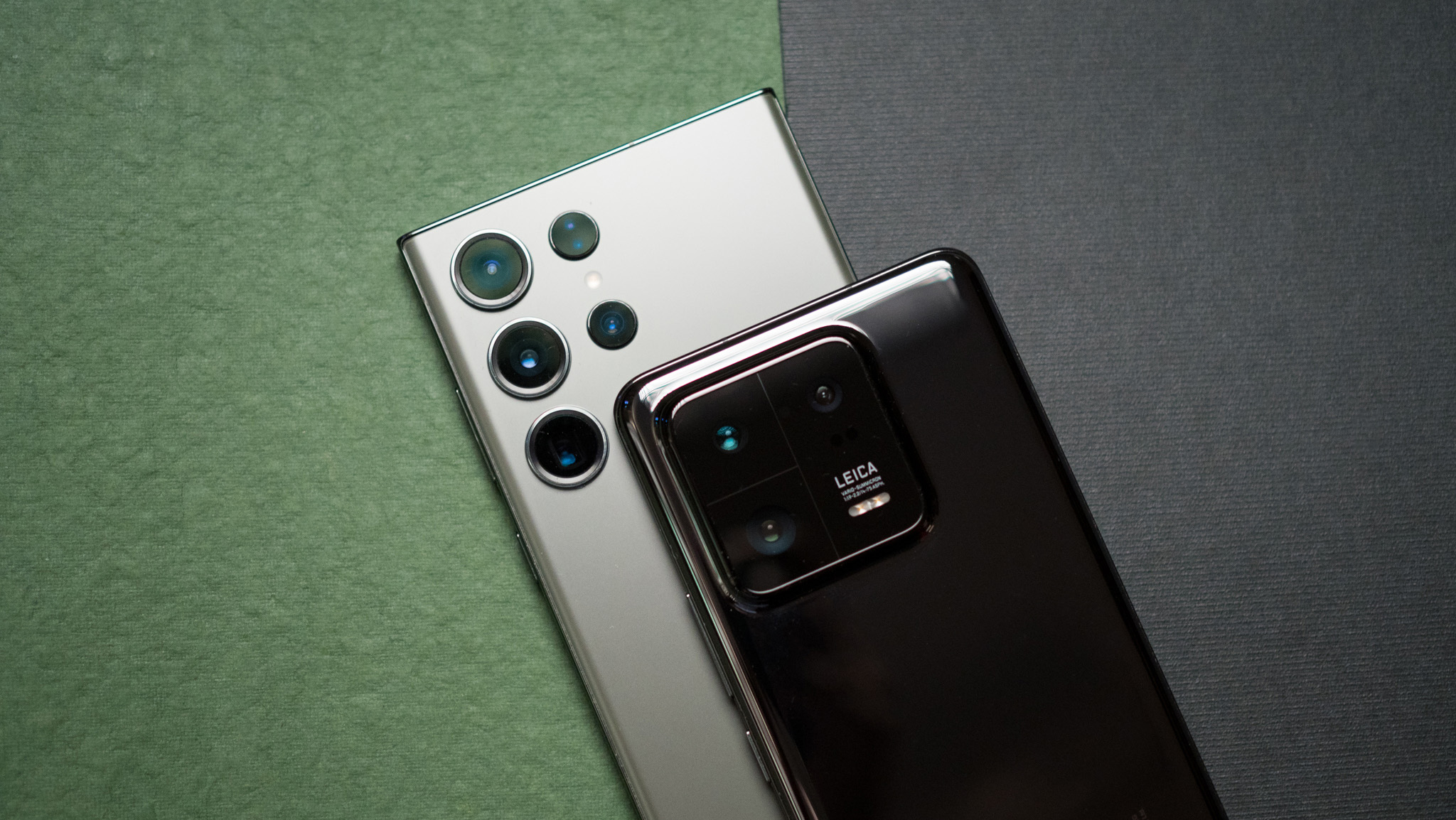
Samsung continues to deliver a strong camera package with the S23 Ultra, and this year, the highlight is the inclusion of a 200MP module that's phenomenal in daily use. The main camera has OIS and is joined by a 12MP wide-angle lens, and dual 10MP telephoto lenses with OIS that go up to 10x optical zoom. Samsung has a host of software-assisted features that let you take usable shots at up to 30x zoom, and there's also 100x zoom — a feature that debuted two years ago.
Xiaomi is doing a lot of interesting things in this area as well. The 13 Pro is the first global phone from Xiaomi that leverages Leica optics, and it comes with three 50MP cameras at the back, with the main camera featuring a gigantic 1-inch lens. Xiaomi lets you shoot 10-bit Dolby Vision HDR videos from the device itself, and it has 8K video at 24fps, with all cameras able to shoot 4K video at 60fps. For its part, Samsung also has 8K at 24fps, and its four cameras shoot 4K video at 60fps.
When it comes to image quality, both the Galaxy S23 Ultra and Xiaomi 13 Pro do an outstanding job in all situations. That's a given considering the caliber of hardware on offer and the tuning efforts undertaken by both brands in recent years. That said, the Galaxy S23 Ultra is able to dial in on a subject a smidgen faster than the 13 Pro, and its photos have better vibrancy. The oversaturated look is characteristic of Samsung's phones, and the resultant shots look great while sharing on social media.
Xiaomi does a brilliant job as well, and the addition of Leica modes means the images take on a distinct tone that wasn't present in previous versions of its flagships. You get to choose between Authentic and Vibrant modes, and I went with the latter. This mode offers saturated colors and a subtle vignette that highlights the overall image a little better, and the device is on par with the S23 Ultra when it comes to minimized noise levels and color accuracy in situations with little to no ambient light.
Both phones also have stellar wide-angle lenses, and while I like the fact that Xiaomi is doing more with a zoom lens, the S23 Ultra fares better when shooting at up to 10x and beyond. What's particularly interesting is the strides both brands made in terms of video; the S23 Ultra and Xiaomi 13 Pro have the ability to shoot smooth footage without the need for a gimbal, and the built-in stabilization works incredibly well.
Overall, these are two of the best camera packages you'll find on Android, and it comes down to versatility. I still think Samsung has the edge here, but Xiaomi isn't far behind.
Samsung Galaxy S23 Ultra vs. Xiaomi 13 Pro: Software

Samsung and Xiaomi did a lot of work over the last three years to refine their interfaces, and that's evident when using the S23 Ultra and 13 Pro. Let's start with Samsung; the S23 Ultra runs One UI 5.1 based on Android 13 out of the box, and it has a modern design that feels polished.
Samsung did a great job integrating all the features Google introduced in Android 13, and there's a lot of customizability out of the box. Of course, you also get custom utilities like Good Lock that significantly extend the customization options available, and if you want to tweak just about every facet of the interface, I highly recommend giving it a try.
As for Xiaomi, I like the direction the brand is taking with MIUI. The Xiaomi 13 Pro runs MIUI 14 based on Android 13 out of the box, and while the brand made a lot of under-the-hood tweaks to make the interface runs smoother — it feels more fluid than previous generations — it doesn't quite have any major user-facing changes, and the interface needs a fresh coat of paint.
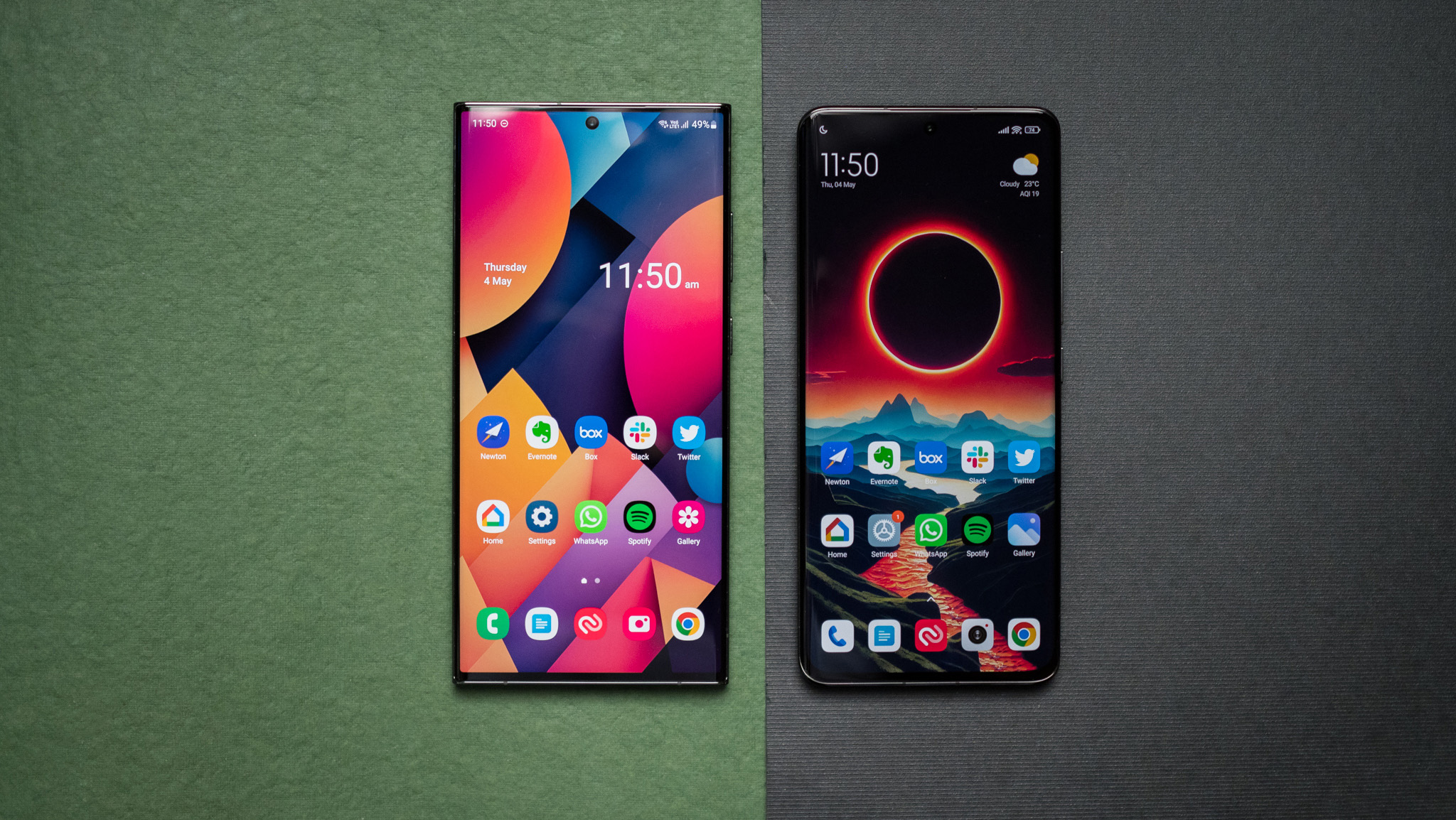
To its credit though, Xiaomi is doing a great job ensuring it doesn't include as many pre-installed apps on its phones, and whatever you'll find on the 13 Pro, you can easily uninstall. This is where Samsung is on the backfoot; the S23 Ultra has a boatload of bloatware, and while you can disable or uninstall most of these services, it's annoying to see on such a high-end phone.
When it comes to updates, Samsung continues to set the tone for Android as a whole. My S23 Ultra has received monthly security updates on time — Samsung sends it out at the same time or even earlier than Google for its Pixels — and the phone will get four guaranteed Android OS updates.
Xiaomi hasn't done much in this area in the last two years, and the 13 Pro will get three platform updates. I'm not confident in Xiaomi's ability to deliver these updates on time either; my 12 Pro was the last of the major flagships to switch to Android 13. And as for security updates, Xiaomi guarantees quarterly updates, and that just isn't enough for a flagship — I want to see monthly updates like Google and Samsung.
Samsung Galaxy S23 Ultra vs. Xiaomi 13 Pro: What's the best phone for you?
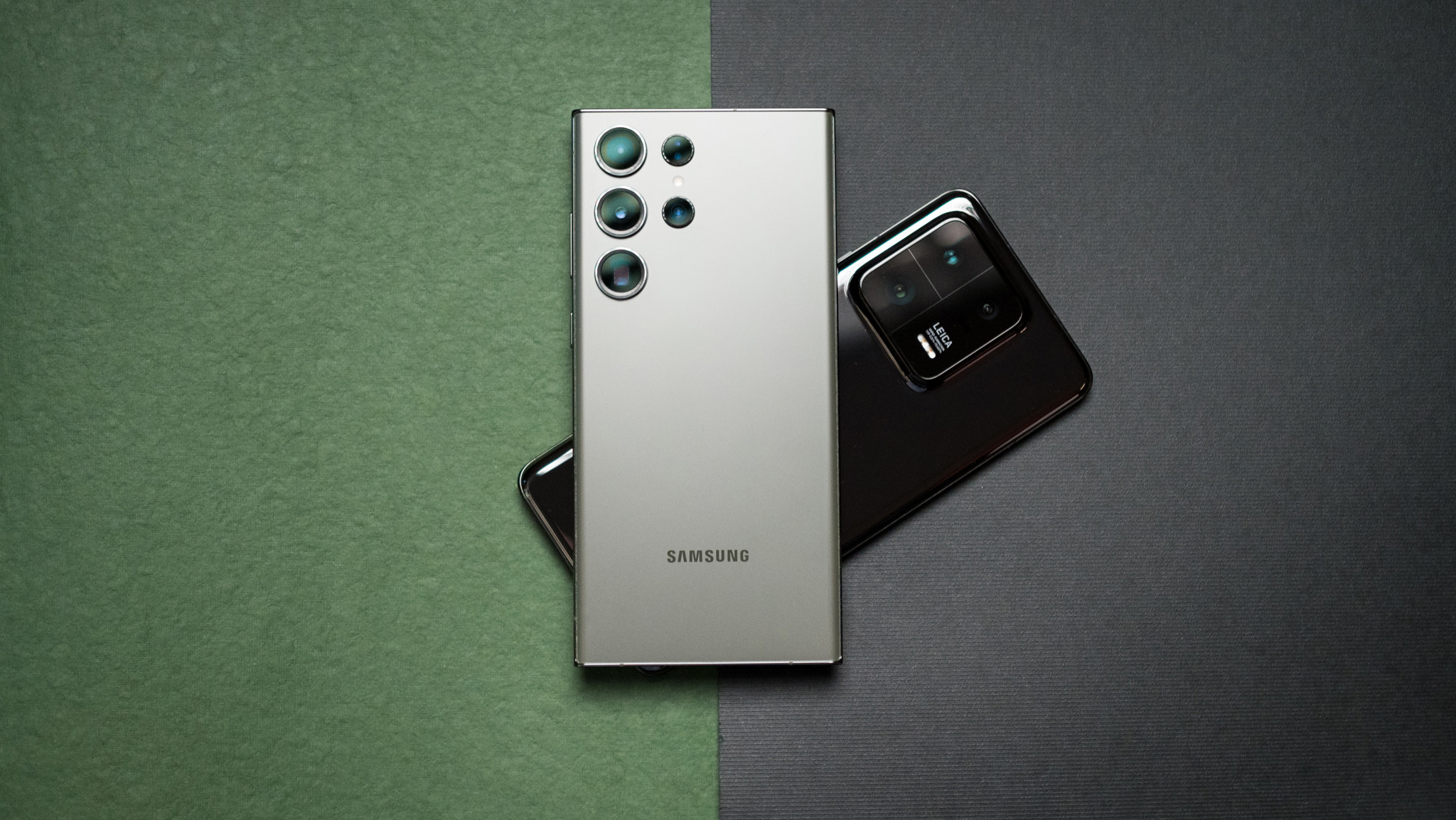
The Xiaomi 13 Pro is one of the best phones Xiaomi has rolled out to date, and the cameras alone are worth the price of admission. That said, the S23 Ultra also has terrific cameras, and Samsung offers more software updates and a cleaner interface with more features.
Ultimately, my recommendation varies based on the region. Considering Xiaomi has no intention to launch its phones in North America, the Galaxy S23 Ultra is the default choice in that region. As for other countries, the Xiaomi 13 Pro is available for ₹79,999 ($976) for the 12GB/256GB model in India, and you'll need to shell out ₹1,24,999 ($1,526) to get your hands on the S23 Ultra in the country. Yes, the S23 Ultra is good, but it isn't ₹45,000 ($550) better than what Xiaomi is offering, and for my money, I'd just get the Xiaomi 13 Pro.
Now, the situation changes in European markets. In the U.K., the Xiaomi 13 Pro is selling at £1,099 ($1,372) for the 12GB/256GB version, and the S23 Ultra can be had for £1,249 ($1,559). Similarly, the Xiaomi 13 Pro costs €1,299 ($1,435) in Germany, and the S23 Ultra is €1,399 ($1,546). With a difference of under $200, you're better off with the S23 Ultra; just the fact that you get one more software update makes Samsung's flagship that much more enticing.
It's clear that Xiaomi is being aggressive in India and China — two of its largest markets — and in these countries, the Xiaomi 13 Pro is an absolute steal. But everywhere else, you should consider the Galaxy S23 Ultra instead — it is my favorite all-round phone of 2023.
If you want the phone with the most number of features, the Galaxy S23 Ultra is still the best overall choice. With a gorgeous design, sublime screen, the best hardware currently available, and versatile cameras that deliver outstanding photos, the S23 Ultra is the obvious choice for most users.
Xiaomi did a magnificent job with the 13 Pro, and the cameras in particular are markedly better than previous years. The fact that the phone is sold for considerably lower than the S23 Ultra in select global markets makes this a terrific bargain.







